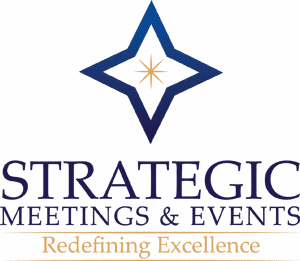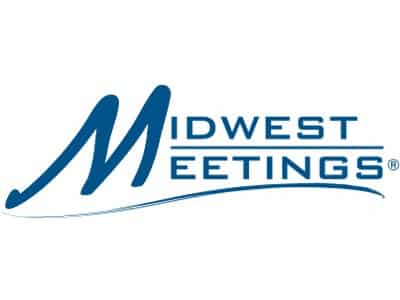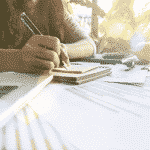Measuring and Monitoring Your Success
By Christy Lamagna CMP, CMM, CTSM
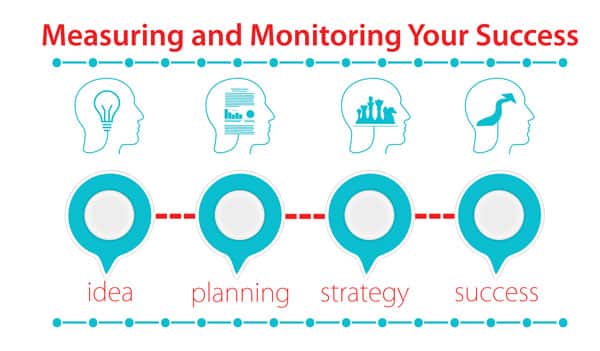
SITE Chicago’s events are atop my list of favorites. They not only bring a diverse group of industry professionals together to network, laugh, and learn, they employ a key principle of the strategic planning process when they decide what events they are going to create and offer, and that makes all the difference.
All too often we get so caught up in the product or service we’re promoting we lose sight of our audience. Sure, we focus on how many people will come, and what they’ll eat, and we’re hopeful they’ll purchase from us in the future, but somewhere along the way the people become “attendees,” which somehow translates to a faceless entity rather than a welcomed guest and human being.
When we forget we need to answer the question “What’s in it for me?” for our target audience and when we overlook their needs because we’re myopically focused on ours, we not only lose attendees, we lose credibility. Preventing this is easy and the rewards are exponential so let’s take a page from those who are doing it right and learn something.
SITE Chicago hosted a luncheon event for hoteliers and trusted suppliers to meet planners. Nothing unique about that on the surface. But they went deeper. They thought about their audience and explored what else could be offered to enhance the experience and make the time productive on multiple levels. The answers were creative, experiential, effective, and made a lasting impression about the destination because they took the time to make the event about the attendees.
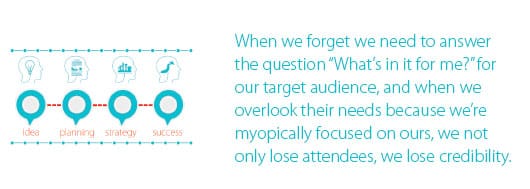
Here’s what they did:
- A candy table was available complete with to-go bags so guests could bring back a treat to thank their coworkers for covering for them while they were away. There was no rule that the candy had to be shared, but for those who had a bit of guilt around leaving, this not only served as a great distraction, it was a ‘sweet’ thank you to those who stayed behind.
- Multiple, branded giveaway items were displayed, and each guest was able to select the one which resonated with them most. I choose an embossed Moleskin journal, while others chose items they would use most. By choosing the item I wanted I’m more likely to use it and keep the brand front and center. That little bit of choice makes a huge difference.
- A waxing station was setup at the far end of the room. At first it seemed bizarre, but, when I saw the line of people waiting for a wax and heard them praising the idea as it took something off their ‘to do’ list unexpectedly, I understood the premise. The event organizers thought about the whole attendee not just the part that has purchasing power. By recognizing how busy their guests are and offering a simple but valued service they created a conversation piece, gave attendees back time, saved them a few dollars, and created HUGE laughs when a few of the men were persuaded to try it and told it didn’t hurt!
- Small cocktail tables were setup throughout the room for hoteliers and supplier partners. Guests could eat, drink, mingle, and learn at their leisure. There were no formal presentations or slide decks. There was no hard sell or face-to-face, timed interaction. It was casual, informal, friendly, and super effective. It was about sharing information, not selling. Conversations flowed and were organic. The information was much more likely to be retained as it was solicited by the attendee.
- Activities were attention grabbing, personalized, and memorable. For instance, a duo of curiously dressed men were sitting behind two old-fashioned typewriters writing Haikus. Over a brief chat they’d solicit enough information about the guest to create a custom poem which they then typed and presented on a notecard. It was just as much fun to watch someone else experience the process as it was to partake in it. The writers were from the destination being showcased and proved to be an effective way to engage attendees.
By creating an event that planners could enjoy and vendor services they could evaluate first-hand, SITE not only showcased what the destination had to offer, they brought the experience to life. Guests left with a sensory memory which is exponentially more powerful than simply recalling facts and figures about a property or location. Even the sense of smell was engaged with customized essential oil blends for guests (again, created by them and for them specifically.)
Events can be expenditures or investments. It all comes down to how you plan and present them. As expenditures they get expensive and have limited returns. When planned strategically they become investments and the return is exponentially greater. Strategic events answer the question “What’s in it for me?” and when you do that what the guests do after they leave is all about you. It’s a beautiful thing.
Make 2019 the year you commit to evolving from an event planner into an event strategist and elevate yourself from the ballroom to the boardroom. The view from the top is great and worth the effort!
